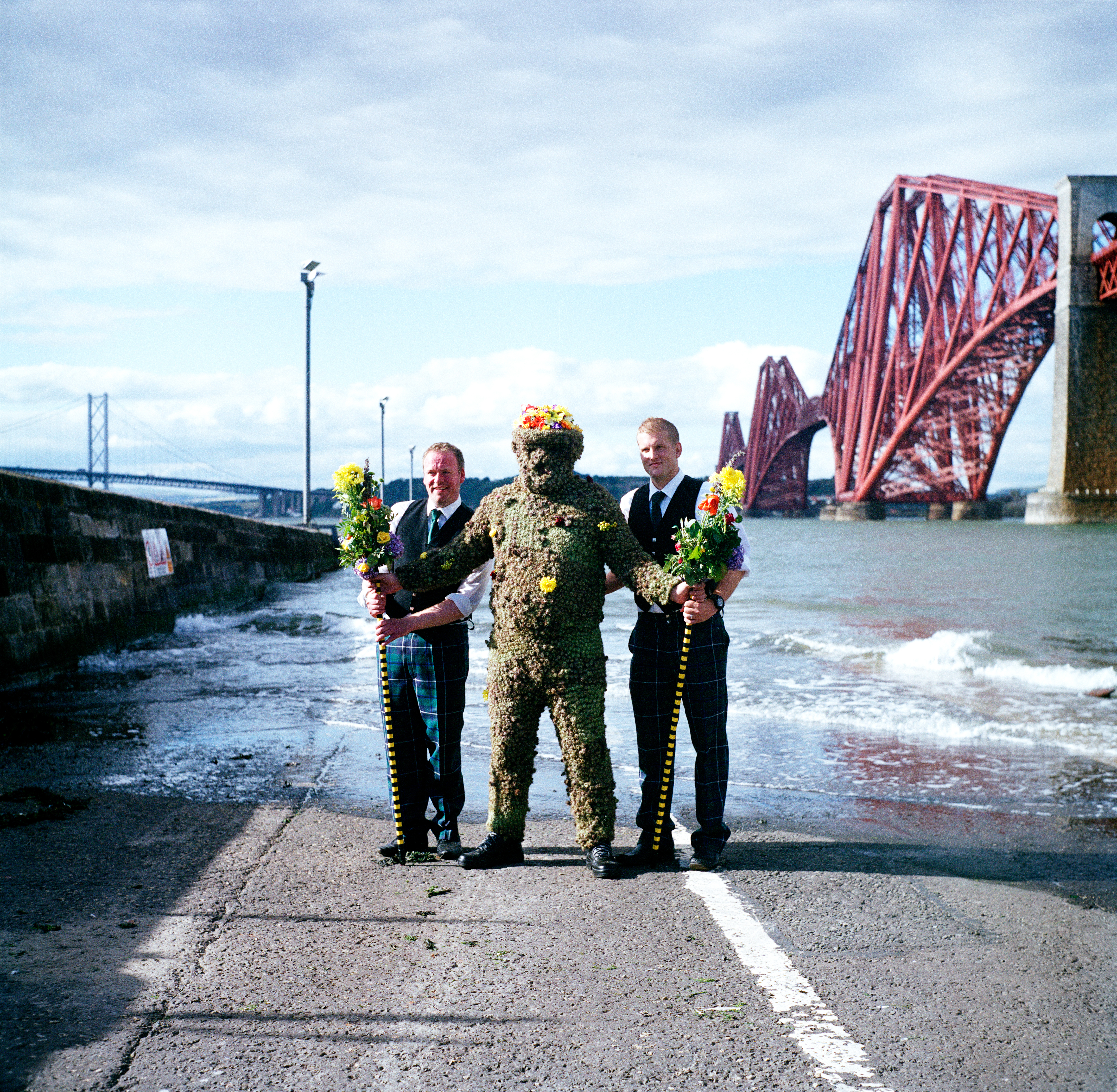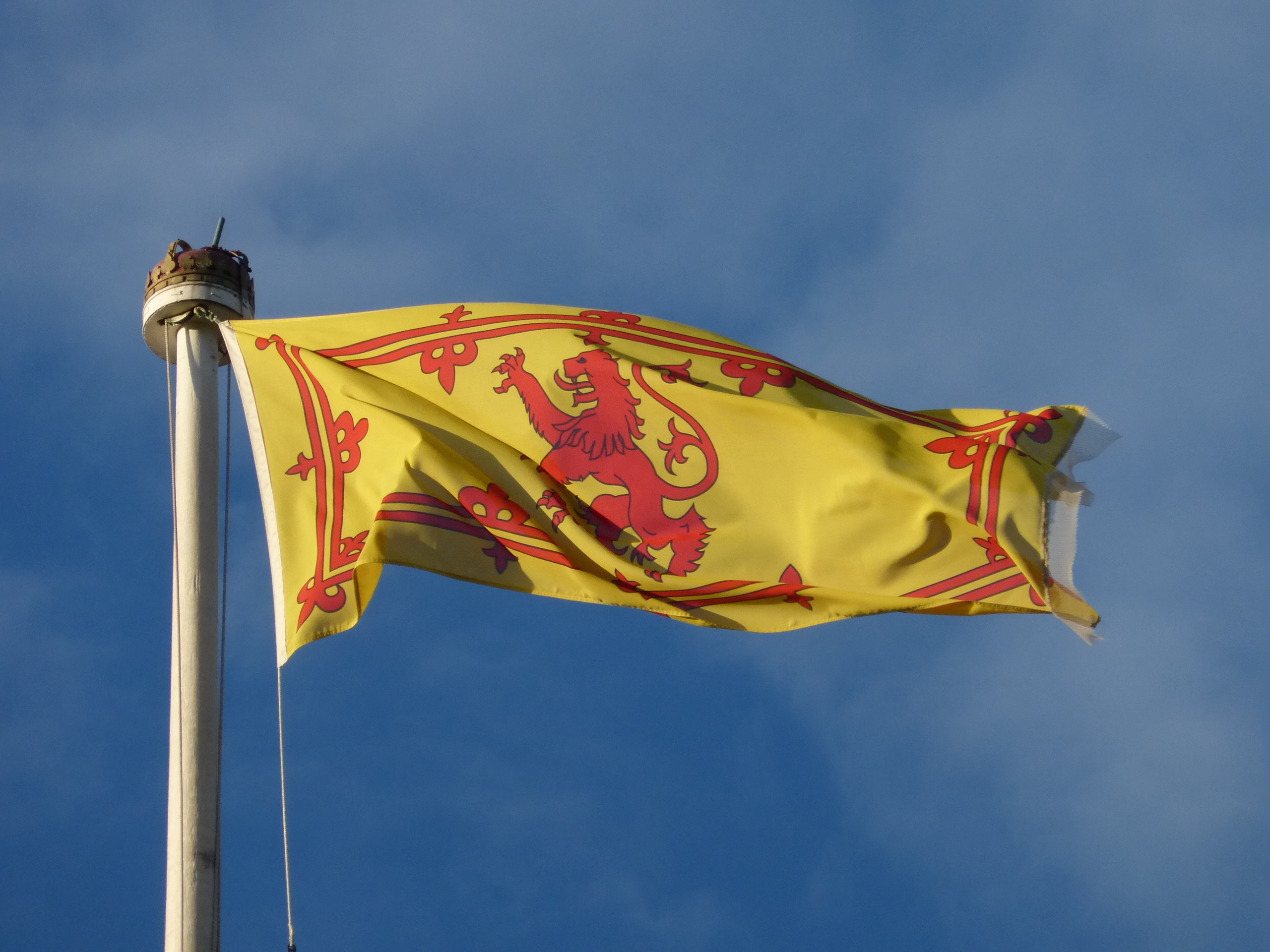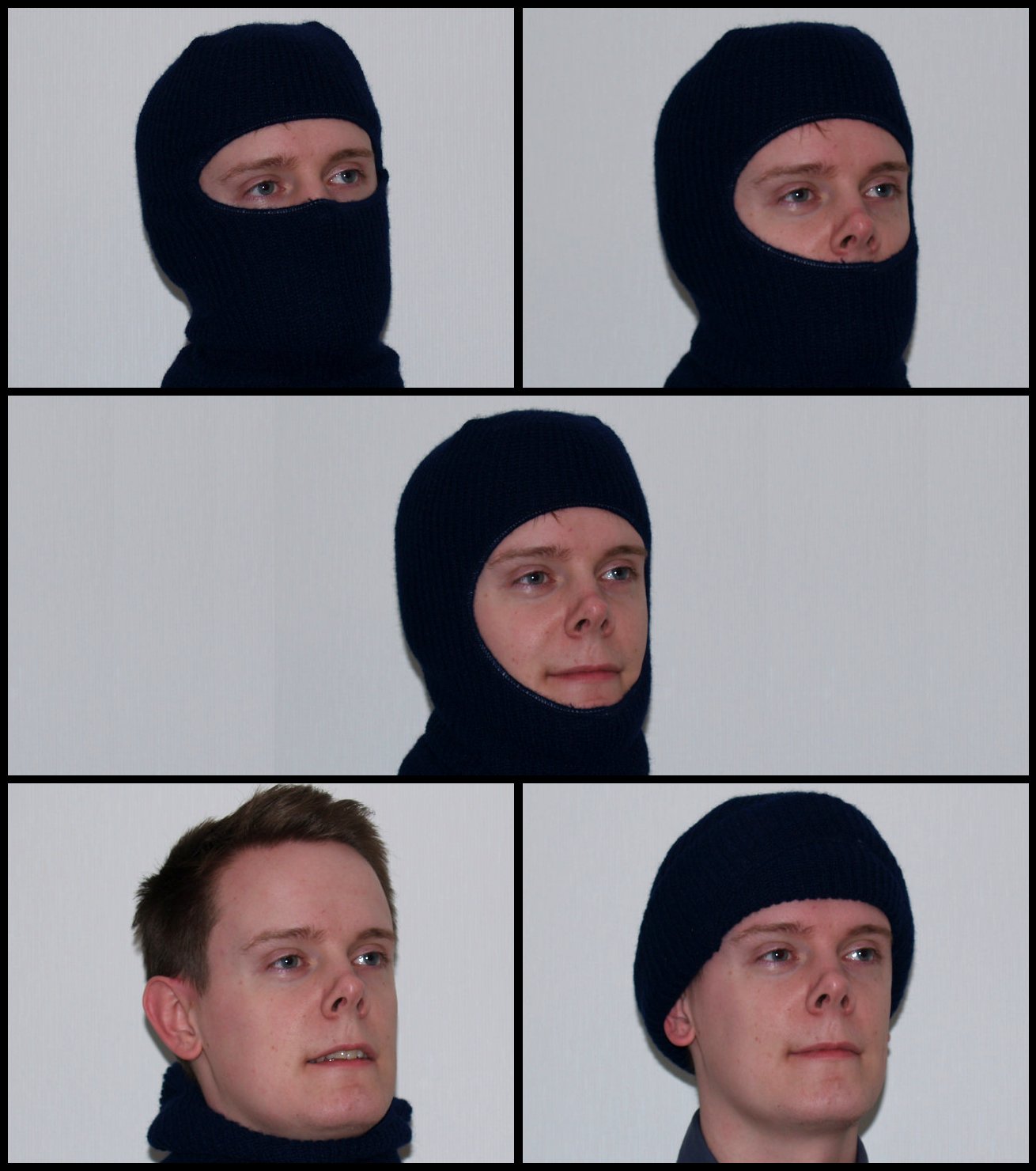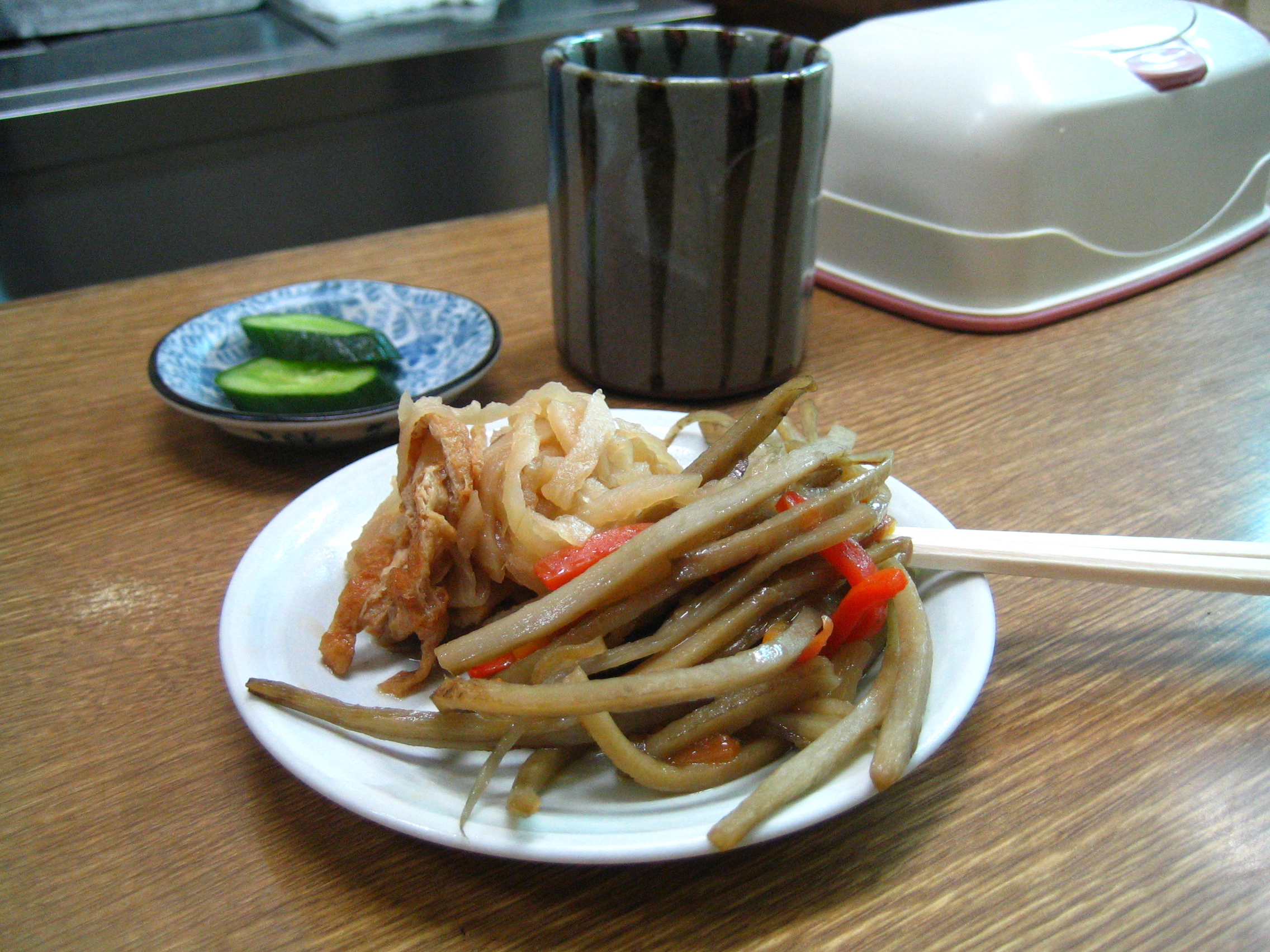|
The Burry Man
The Burryman or Burry Man is the central figure in an annual ceremony or ritual, the Burryman's Parade, that takes place in the town of South Queensferry, near Edinburgh on the south bank of the Firth of Forth in Scotland, on the second Friday of August. The custom is associated with, but separate from, the town's Ferry Fair.Hole, Christina (1978). ''A Dictionary of British Folk Customs'', pp53–54, Paladin Granada, On the Friday morning of the fair, a local man is covered from head to ankles in burrs (the sticky flowerheads or seedheads of two species of burdock, '' Arctium lappa'' and '' A. minus'') that grow locally, and walked through the town for over nine hours. The meaning of this ceremony has long been forgotten, but it has been the cause of much speculation. [...More Info...] [...Related Items...] OR: [Wikipedia] [Google] [Baidu] |
Burry Man South Queensferry 2013
{{surname, Burry ...
Burry is a surname. Notable people with the surname include: *Andrew George Burry (1873–1975), businessman, manufacturer and philanthropist *Harold Burry (1912–1992), head football coach at Westminster College *Hugh Burry (1930–2013), New Zealand rugby union player *Lester Burry (1898–1977), United Church minister *Mark Burry (born 1957), New Zealand architect *Michael Burry, American investment fund manager See also *Barry (other) *Berry (other) *Burri *Burry Holms *Burry Port *Bury (other) *The Burry Man The Burryman or Burry Man is the central figure in an annual ceremony or ritual, the Burryman's Parade, that takes place in the town of South Queensferry, near Edinburgh on the south bank of the Firth of Forth in Scotland, on the second Friday o ... [...More Info...] [...Related Items...] OR: [Wikipedia] [Google] [Baidu] |
Apotropaic Magic
Apotropaic magic (from Greek "to ward off") or protective magic is a type of magic intended to turn away harm or evil influences, as in deflecting misfortune or averting the evil eye. Apotropaic observances may also be practiced out of superstition or out of tradition, as in good luck charms (perhaps some token on a charm bracelet), amulets, or gestures such as crossed fingers or knocking on wood. Many different objects and charms were used for protection throughout history. Symbols and objects Ancient Egyptian Apotropaic magical rituals were practiced throughout the ancient Near East and ancient Egypt. Fearsome deities were invoked via ritual in order to protect individuals by warding away evil spirits. In ancient Egypt, these household rituals (performed in the home, not in state-run temples) were embodied by the deity who personified magic itself, Heka. The two gods most frequently invoked in these rituals were the hippopotamus-formed fertility goddess, Taweret, and the ... [...More Info...] [...Related Items...] OR: [Wikipedia] [Google] [Baidu] |
Luck
Luck is the phenomenon and belief that defines the experience of improbable events, especially improbably positive or negative ones. The naturalistic interpretation is that positive and negative events may happen at any time, both due to random and non-random natural and artificial processes, and that even improbable events can happen by random chance. In this view, the epithet "lucky" or "unlucky" is a descriptive label that refers to an event's positivity, negativity, or improbability. Supernatural interpretations of luck consider it to be an attribute of a person or object, or the result of a favorable or unfavorable view of a deity upon a person. These interpretations often ''prescribe'' how luckiness or unluckiness can be obtained, such as by carrying a lucky charm or offering sacrifices or prayers to a deity. Saying someone is "born lucky" may hold different meanings, depending on the interpretation: it could simply mean that they have been born into a good family or ... [...More Info...] [...Related Items...] OR: [Wikipedia] [Google] [Baidu] |
Whisky
Whisky or whiskey is a type of distilled alcoholic beverage made from fermented grain mash. Various grains (which may be malted) are used for different varieties, including barley, corn, rye, and wheat. Whisky is typically aged in wooden casks, which are typically made of charred white oak. Uncharred white oak casks previously used for the aging of sherry are also sometimes used. Whisky is a strictly regulated spirit worldwide with many classes and types. The typical unifying characteristics of the different classes and types are the fermentation of grains, distillation, and aging in wooden barrels. Etymology The word ''whisky'' (or ''whiskey'') is an anglicisation of the Classical Gaelic word (or ) meaning "water" (now written as in Modern Irish, and in Scottish Gaelic). This Gaelic word shares its ultimate origins with Germanic ''water'' and Slavic ''voda'' of the same meaning. Distilled alcohol was known in Latin as ("water of life"). This was translated into Old I ... [...More Info...] [...Related Items...] OR: [Wikipedia] [Google] [Baidu] |
Union Flag
The Union Jack, or Union Flag, is the ''de facto'' national flag of the United Kingdom. Although no law has been passed making the Union Flag the official national flag of the United Kingdom, it has effectively become such through precedent. It is sometimes asserted that the term ''Union Jack'' properly refers only to naval usage, but this assertion was dismissed by the Flag Institute in 2013 following historical investigations. The flag has official status in Canada, by parliamentary resolution, where it is known as the Royal Union Flag. It is the national flag of all British overseas territories, being localities within the British state, or realm, although local flags have also been authorised for most, usually comprising the blue or red ensign with the Union Flag in the Flag terminology#Flag elements, canton and Defacement (flag), defaced with the distinguishing arms of the territory. These may be flown in place of, or along with (but taking precedence after) the national f ... [...More Info...] [...Related Items...] OR: [Wikipedia] [Google] [Baidu] |
Lion (heraldry)
The lion is a common charge in heraldry. It traditionally symbolises courage, nobility, royalty, strength, stateliness and valour, because historically the lion has been regarded as the "king of beasts". The lion also carries Judeo-Christian symbolism. The Lion of Judah stands in the coat of arms of Jerusalem. Similar-looking lions can be found elsewhere, such as in the coat of arms of the Swedish royal House of Bjelbo, from there in turn derived into the coat of arms of Finland, formerly belonging to Sweden. History The animal designs in the heraldry of the high medieval period are a continuation of the animal style of the Viking Age, ultimately derived from the style of Scythian art as it developed from c. the 7th century BC. Symmetrically paired animals in particular find continuation from Migration Period art via Insular art to Romanesque art and heraldry. The animals of the "barbarian" (Eurasian) predecessors of heraldic designs are likely to have been used as ... [...More Info...] [...Related Items...] OR: [Wikipedia] [Google] [Baidu] |
Royal Standard Of Scotland
The Royal Banner of the Royal Arms of Scotland, also known as the Royal Banner of Scotland, or more commonly the Lion Rampant of Scotland, and historically as the Royal Standard of Scotland, ( gd, Bratach rìoghail na h-Alba, sco, Ryal banner o Scotland) or Banner of the King of Scots, is the royal banner of Scotland, and historically, the royal standard of the Kingdom of Scotland. Used historically by the Scottish monarchs, the banner differs from Scotland's national flag, the Saltire, in that its correct use is restricted by an Act of the Parliament of Scotland to only a few Great Officers of State who officially represent the Monarchy in Scotland. pointing at thLyon King of Arms Act 1672, c. 47and thLyon King of Arms Act 1867, 30 & 31 Vict. c. 17/ref> It is also used in an official capacity at royal residences in Scotland when the Head of State is not present. The earliest recorded use of the Lion Rampant as a royal emblem in Scotland was by Alexander II in 1222; with ... [...More Info...] [...Related Items...] OR: [Wikipedia] [Google] [Baidu] |
Balaclava (clothing)
A balaclava, also known as a balaclava helmet or ski mask, is a form of cloth headgear designed to expose only part of the face, usually the eyes and mouth. Depending on style and how it is worn, only the eyes, mouth and nose, or just the front of the face are unprotected. Versions with enough of a full face opening may be rolled into a hat to cover the crown of the head or folded down as a collar around the neck. History Similar styles of headgear were known in the 19th century as the ''Uhlan cap'' worn by Polish and Prussian soldiers, and the ''Templar cap'' worn by outdoor sports enthusiasts. The name comes from their use at the Battle of Balaclava during the Crimean War of 1854, referring to the town near Sevastopol in the Crimea, where British troops there wore knitted headgear to keep warm. Handmade balaclavas were sent over to the British troops to help protect them from the bitter cold weather. British troops required this aid, as their own supplies (warm clothing, w ... [...More Info...] [...Related Items...] OR: [Wikipedia] [Google] [Baidu] |
Velcro
Velcro, officially known as Velcro IP Holdings LLC and trading as Velcro Companies, is a British privately held company, founded by Swiss electrical engineer George de Mestral in the 1950s. It is the original manufacturer of hook-and-loop fasteners, which de Mestral invented. History Swiss electrical engineer George de Mestral invented his first touch fastener when, in 1941, he went for a walk in the Alps, and wondered why burdock seeds clung to his woolen socks and coat, and also his dog Milka. He discovered it could be turned into something useful. He patented it in 1955, and subsequently refined and developed its practical manufacture until its commercial introduction in the late 1950s. The fastener consisted of two components: a lineal fabric strip with tiny hooks that could 'mate' with another fabric strip with smaller loops, attaching temporarily, until pulled apart. Initially made of cotton, which proved impractical, the fastener was eventually constructed with nylon a ... [...More Info...] [...Related Items...] OR: [Wikipedia] [Google] [Baidu] |
A3 Paper
ISO 216 is an International Organization for Standardization, international standard for paper sizes, used around the world except in North America and parts of Latin America. The standard defines the "A", "B" and "C" series of paper sizes, including A4, the most commonly available paper size worldwide. Two supplementary standards, ISO 217 and ISO 269, define related paper sizes; the ISO 269 "C" series is commonly listed alongside the A and B sizes. All ISO 216, ISO 217 and ISO 269 paper sizes (except some envelopes) have the same aspect ratio, square root of 2, , within rounding to millimetres. This ratio has the unique property that when cut or folded in half widthways, the halves also have the same aspect ratio. Each ISO paper size is one half of the area of the next larger size in the same series. Dimensions of A, B and C series History The oldest known mention of the advantages of basing a paper size on an aspect ratio of is found in a letter written on 25 Octob ... [...More Info...] [...Related Items...] OR: [Wikipedia] [Google] [Baidu] |
Arctium Minus Corimbo
''Arctium'' is a genus of biennial plants commonly known as burdock, family Asteraceae. Native to Europe and Asia, several species have been widely introduced worldwide. Burdock's clinging properties, in addition to providing an excellent mechanism for seed dispersal, led to the invention of the hook and loop fastener. Description Plants of the genus ''Arctium'' have dark green leaves that can grow up to long. They are generally large, coarse and ovate, with the lower ones being heart-shaped. They are woolly underneath. The leafstalks are generally hollow. ''Arctium'' species generally flower from July through to October. Burdock flowers provide essential pollen and nectar for honeybees around August when clover is on the wane and before the goldenrod starts to bloom. Burdock's clinging properties provides it an excellent mechanism for seed dispersal. Taxonomy A large number of species have been placed in genus ''Arctium'' at one time or another, but most of them are now ... [...More Info...] [...Related Items...] OR: [Wikipedia] [Google] [Baidu] |
Human Sacrifice
Human sacrifice is the act of killing one or more humans as part of a ritual, which is usually intended to please or appease gods, a human ruler, an authoritative/priestly figure or spirits of dead ancestors or as a retainer sacrifice, wherein a monarch's servants are killed in order for them to continue to serve their master in the next life. Closely related practices found in some tribal societies are cannibalism and headhunting. Human sacrifice was practiced in many human societies beginning in prehistoric times. By the Iron Age with the associated developments in religion (the Axial Age), human sacrifice was becoming less common throughout Africa, Europe, and Asia, and came to be looked down upon as barbaric during classical antiquity. In the Americas, however, human sacrifice continued to be practiced, by some, to varying degrees until the European colonization of the Americas. Today, human sacrifice has become extremely rare. Modern secular laws treat human sacrifices ... [...More Info...] [...Related Items...] OR: [Wikipedia] [Google] [Baidu] |










_-_Ciudad_de_México.jpg)